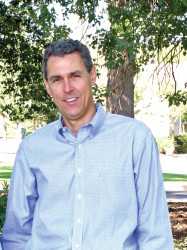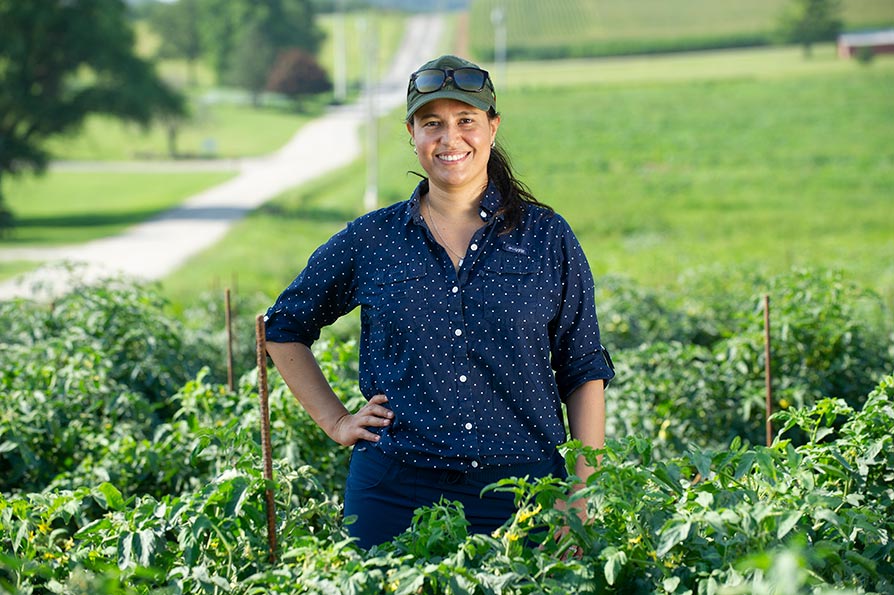Mission Possible: Stopping Asian Citrus Psyllid

Ken Keck is a man on a mission, and given his background, starting with the fact that he’s an orange grove owner who’s also a lawyer, he might be just the man for the job. Keck took the reins as president of the California Citrus Research Board (CCRB) from Ted Batkin on June 1. His mission is to help the state restrict the movement of Asian citrus psyllid, and, in so doing, prevent Huanglongbing (HLB) from infecting citrus trees.
Keck comes to the job from Florida, where he served as general counsel and executive director of the Florida Department of Citrus from 2006-2012. Prior to that, he served as the organization’s director of government affairs and general counsel from 2002-2006, and director of legislative and regulatory affairs with Florida Citrus Mutual from 1999-2002.
Keck’s family is deeply rooted in citrus, having owned orange groves in Florida for about 65 years. He and his brother and sister are third-generation owners, though they farm out the day-to-day management, and none counts on the groves’ income for a living. That’s probably a good thing, given the fact that the Sunshine State got whipsawed by HLB. As Keck puts it: “In Florida we were on the mat before the starting bell rang.”
That’s certainly not the case in California, and Keck, fresh off the Florida experience, hopes to keep it that way. But unlike some people in the California citrus industry, who believe Florida has little to contribute to the discussion, Keck thinks differently. “Given what the Florida industry has weathered,” he says, “if California growers don’t take HLB seriously, it’s a travesty.”
Much In Common
The two states’ citrus industries do have almost completely different markets, Keck notes. While California supplies the lion’s share of the nation’s fresh citrus fruit, the Florida industry concentrates on juice. “The markets are obviously different, I recognize the differences, and sure, we can point out the differences all day,” he says. “But there are commonalities.”
That’s where Keck believes he can put his experience in Florida to work. “We’re seeking to make 1+1 = 3,” he says. “That’s shorthand for saying, ‘If we can sit down with Florida research organizations, we can ID the common areas of research — areas common to all citrus.’”
In fact, Keck was in the midst of doing just that — bringing the two states’ research communities together — when Western Fruit Grower caught up with him in late August. He spoke on his cell phone from the Houston airport, fittingly halfway between the two states, as he was bringing the CCRB’s six board members to meet with their counterparts in Florida with the Citrus Research Development Foundation.
Keck says he is just trying to help growers get the
most bang for their buck through a common, streamlined research program. “That would maximize the resources of both states’ growers,” he says. “I hope to lead this board into the future, maximizing research and avoiding redundancies.”
Early Detection Is Key
One advantage growers today have is the toolbox available to detect diseases such as HLB, says Ken Keck. One such tool is the polymerase chain reaction (PCR), a technique which is used to amplify the number of copies of a specific region of DNA, in order to produce enough DNA to be adequately tested. This technique can be used to identify disease-causing viruses and/or bacteria with a very high probability. “If a tree has a PCR positive for HLB, it’s a call for action,” he says. “If a grower hesitates a day in taking that (tree) out, he hasn’t learned from what Florida experienced.”
Early detection is critical, and in fact many research projects are focused on early detection, says Keck, as scientists try to come up with more affordable but still reliable methods. Early detection is critical because latency is such a big problem in dealing with HLB, and HLB is currently an incurable disease. “It can be two to three years — perhaps more — before an infected tree presents visual symptoms,” he says. “It’s funny behavior, and it really presents a lot of challenges.”
Keck and the California Citrus Research Board (CCRB) members spent three days in late August listening to research proposals. Of the 57 projects — which had made the cut from an initially much longer list — many continued work in early detection across a number of platforms.
“The CCRB is heavily invested in detection technology,” he says. “Florida’s more into models where they are trying to live with HLB. God forbid that is California’s future.”









